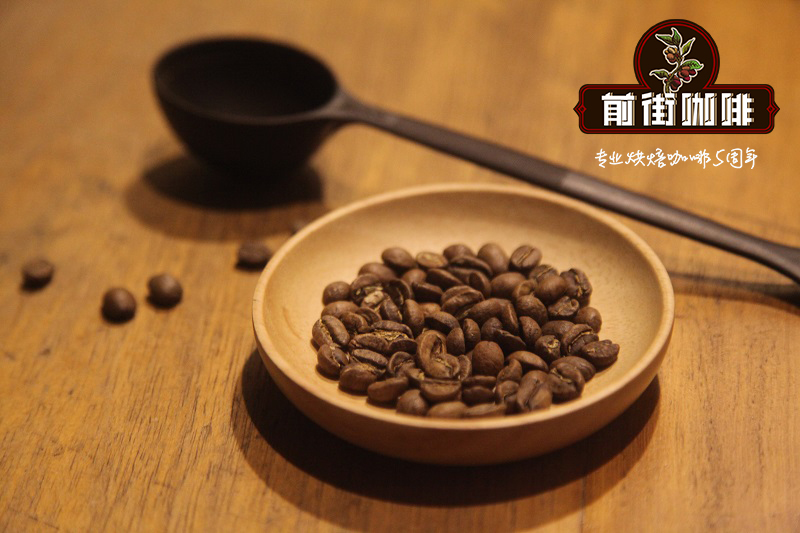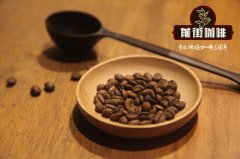How about Peruvian coffee? introduction to Peruvian caturra coffee beans

Professional coffee knowledge exchange more coffee bean information please follow the coffee workshop (Wechat official account cafe_style)
Front Street-Peruvian Coffee introduction
Peru (Spanish: Per ú), a country in western South America, has an extremely long coastline, as well as the Andes Mountains, which cover 1/3 of the country's area. The western part of Peru has a tropical desert climate, while the eastern and central part of Peru has a plateau, mountain or tropical rain forest climate. Many climatic environments are in the same country. Rich climate diversity and large temperature difference between day and night have created a unique coffee growing environment in Peru.
Peru gave birth to the Little Northern prehistoric civilization, one of the earliest human civilizations in the Americas, and the Inca Empire, the largest country in the Americas before Columbus. Unfortunately, it was later colonized by Spain, and wars continued for hundreds of years. Although Peru began to grow coffee in the mid-18th century, it was one of the first countries in the Americas to grow coffee, but it was mostly for domestic consumption and rarely exported.
Opportunity did not emerge until the end of the 19th century, when a large-scale leaf rust swept through Indonesia and neighboring countries, causing European buyers to start looking for new sources of coffee, and Peru became their target. At the beginning of the 20th century, Europeans invested in coffee cultivation in Peru, making coffee Peru's primary industry, accounting for 60% of Peru's merchandise exports at that time.
However, there are always ups and downs in the story. In 2014, major coffee producers in South America experienced a leaf rust crisis, in which Peru suffered heavy losses, with exports falling by about 37 per cent to 2.44 million bags from 3.88 million bags in the previous season. During the 2017 / 2018 season, Peruvian coffee exports have rebounded to 4.03 million bags. According to a report from the United States Department of Agriculture on April 23, 2019, Peru is expected to produce 4.5 million bags and export 4.3 million bags in the production season of 2019.
Peru has a unique natural environment: high altitude, plateau climate, suitable temperature, air, light, fertile soil, which lengthens the growing season of coffee beans and makes Arabica coffee taste fragrant and delicious.
About tree species
Peru is the eighth largest producing area in the world in terms of total output. Almost all coffee trees grown in Peru are Arabica, of which more than 70% are Tibica, about 20% are Kaddura, a small number of Katim and so on. About 75% of the coffee trees are planted between 1000 and 1800 meters above sea level.
In short: Qianjie is a coffee research hall, happy to share the knowledge about coffee with you, we share unreservedly just to make more friends fall in love with coffee, and there will be three low-discount coffee activities every month. The reason is that Qianjie wants to make more friends drink the best coffee at the lowest price, which has been Qianjie's tenet for 6 years!
END
Important Notice :
前街咖啡 FrontStreet Coffee has moved to new addredd:
FrontStreet Coffee Address: 315,Donghua East Road,GuangZhou
Tel:020 38364473
- Prev

Cochell Coffee Taste Cochell Coffee beans Yega Xuefei shallow baked how to share
For more information about coffee beans, please follow the front street of Coffee Workshop (Wechat official account cafe_style). Ethiopia introduced the rezoning of areas in Ethiopia in 1995, and the Yirgacheffe as we know it is planned in Gedeo District in the new Gedeo. At present, Yega Xuefei is located in the middle of Gedeo, Cochi.
- Next

Flavor characteristics of Peruvian coffee beans description of flavor and taste of Zen tea Mayou coffee
Professional coffee knowledge exchange more coffee bean information please follow the coffee workshop (Wechat official account cafe_style) front street-Peru Zen tea Mayou washing introduction in Central and South America, Peru compared to Costa Rica, El Salvador and other coffee producers seem to have a lower sense of presence. For domestic coffee players, Peruvian Zen tea Mayou is often made because of its reasonable performance-to-price ratio.
Related
- Beginners will see the "Coffee pull flower" guide!
- What is the difference between ice blog purified milk and ordinary milk coffee?
- Why is the Philippines the largest producer of crops in Liberia?
- For coffee extraction, should the fine powder be retained?
- How does extracted espresso fill pressed powder? How much strength does it take to press the powder?
- How to make jasmine cold extract coffee? Is the jasmine + latte good?
- Will this little toy really make the coffee taste better? How does Lily Drip affect coffee extraction?
- Will the action of slapping the filter cup also affect coffee extraction?
- What's the difference between powder-to-water ratio and powder-to-liquid ratio?
- What is the Ethiopian local species? What does it have to do with Heirloom native species?

